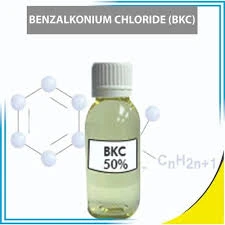Polyacrylamide Flocculant Applications in Water Treatment Processes and Benefits
The Role of Polyacrylamide in Water Treatment An Overview
Water treatment is a crucial process that ensures clean and safe water for various applications, including drinking water supply, industrial use, and wastewater management. One of the most effective and widely used materials in this field is polyacrylamide, a synthetic polymer that serves as a flocculant. This article delves into the properties, applications, and benefits of using polyacrylamide flocculant in water treatment processes.
Polyacrylamide is a water-soluble polymer composed of acrylamide monomers. It can be modified to produce anionic, cationic, or nonionic forms, each suited for specific water treatment applications. The unique molecular structure of polyacrylamide allows it to attract and bind suspended particles in water, facilitating their aggregation into larger clusters known as flocs. This process significantly enhances the efficiency of sedimentation and filtration processes, making it an essential component in modern water treatment systems.
One of the primary applications of polyacrylamide in water treatment is in the clarification of drinking water. By adding polyacrylamide to the water, contaminants and suspended solids can be efficiently removed, resulting in clearer, safer water for consumption. Moreover, in industrial settings, polyacrylamide is used for treating wastewater, where it aids in the removal of heavy metals, oils, and other pollutants before the water is released into the environment or reused in industrial processes.
polyacrylamide flocculant water treatment

The benefits of using polyacrylamide as a flocculant are numerous. Firstly, its effectiveness at low concentrations reduces the amount of chemical required for treatment, lowering operational costs. Additionally, the use of polyacrylamide can lead to faster sedimentation rates, which not only improves water quality but also enhances the overall efficiency of treatment plants. Furthermore, its versatility allows it to be customized for specific water characteristics, ensuring optimal performance across different treatment scenarios.
However, it is essential to consider the environmental impact of polyacrylamide. Although it is generally considered safe when used appropriately, concerns regarding residual acrylamide in treated water have prompted research into its long-term effects. As a result, robust guidelines and regulations have been established to ensure that polyacrylamide is used responsibly and effectively in water treatment applications.
In conclusion, polyacrylamide stands out as a valuable flocculant in water treatment processes, providing significant benefits in terms of efficiency, cost-effectiveness, and water quality enhancement. With ongoing research and advancements in polymer technology, the future of polyacrylamide in water treatment looks promising, paving the way for cleaner and safer water for all.
-
LK-319 Special Scale And Corrosion Inhibitor For Steel Plants: Advanced Solutions for Industrial Water SystemsNewsAug.22,2025
-
Flocculant Water Treatment: Essential Chemical Solutions for Purification ProcessesNewsAug.22,2025
-
Isothiazolinones: Versatile Microbial Control Agents for Industrial and Consumer ApplicationsNewsAug.22,2025
-
Scale Inhibitor: Key Solutions for Water System Scale PreventionNewsAug.22,2025
-
Organophosphonates: Versatile Scale Inhibitors for Industrial Water SystemsNewsAug.22,2025
-
Scale and Corrosion Inhibitor: Essential Chemical Solutions for Water System MaintenanceNewsAug.22,2025





